There was a time when the capital of Romania, Bucharest, was called Little Paris. The fact that you are called small cannot be praiseworthy, but when it comes to Paris, one of the most beautiful and well-known cities in the world, then you must be proud.
Bucharest was the capital of Wallachia since 1659, and in 1859 it became the capital of the Romanian Principality. Although it was the capital for so many hundreds of years, this city was actually structured as a large village. The constructions were made to the liking of the owners, without respecting the urban planning rules (it was not even known what that meant). Oriental influence contributed to this situation.
The great fire of 1859 destroyed a quarter of the city, forced the authorities to impose on the king for new constructions, and made room for the modernization of the city. A modernization that came very quickly. In only forty years, the transition was made from an oriental fair to a western type city. This rapid modernization seems to be a boon but in fact, it was not. A natural development of the city towards modernization should have taken place in about two centuries, in order to achieve a compact and unitary city. Rapid modernization has led to large differences between the city center and the rest of the neighborhoods, in fact, some medieval neighborhoods.
The fact that Romania was ruled by a German prince, starting with 1866, who was then proclaimed king, in 1881, was an engine of modernization. In addition, in 1877 the country's independence from the Ottoman Empire was gained. All this, plus the fact that all the children of the rich went to school in Paris and returned with the desire to impose Western values (which they liked very much). During the reign of King Carol, all the emblematic buildings of the city were built, during the period known throughout Europe as the "Belle Epoque".
I have a book, like a catalog, which is called just that; "Bucharest - Belle Epoque". It presents this era through the photographs of the time.
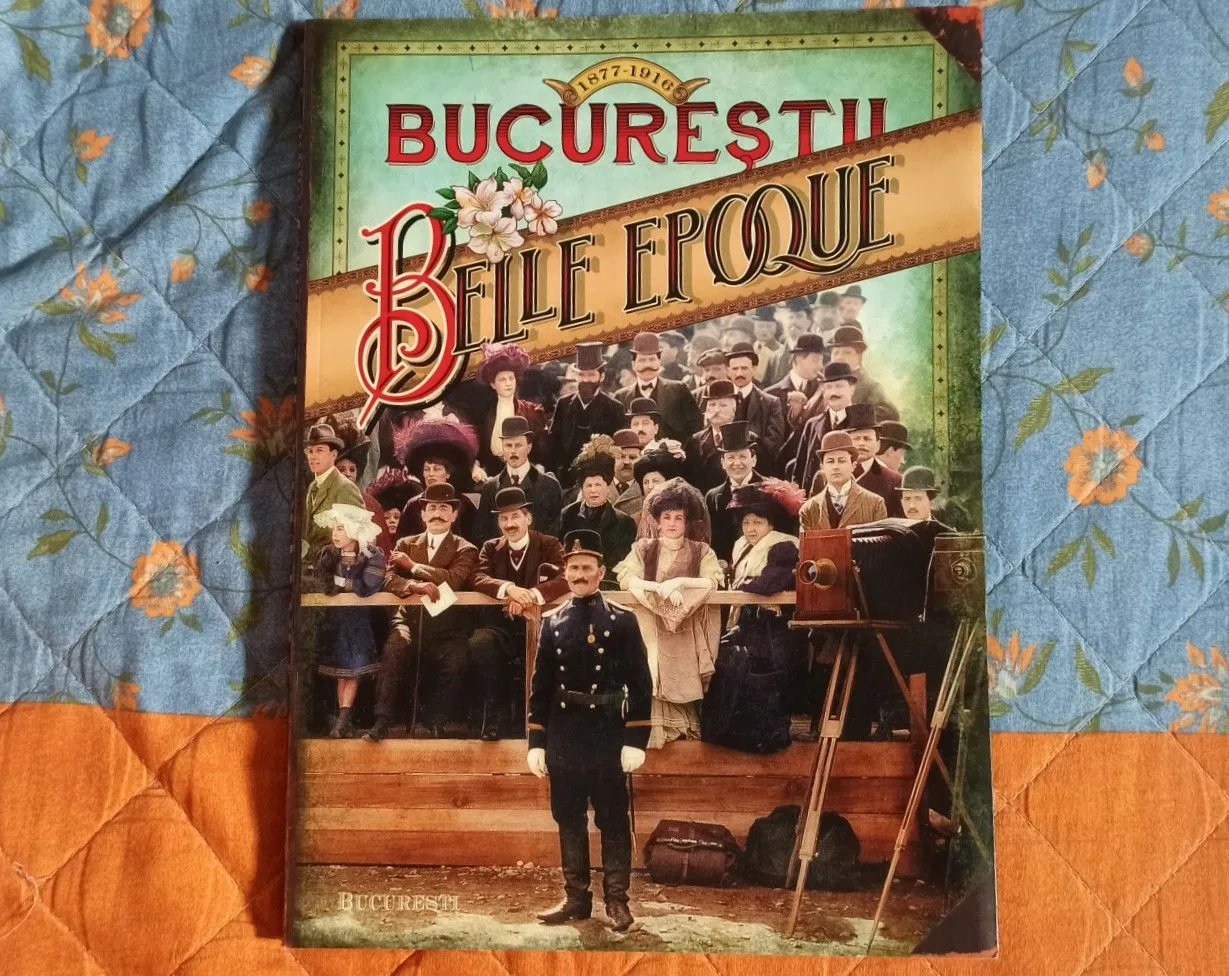
Of course, architecture is the most representative of any era, and the photographs of the buildings built at that time mostly occupy this book. I would like to say that after finding the book I embarked on an expedition to discover these iconic buildings. Of course, it was not so, I have always known these buildings because I have lived in this city for over sixty years. However, for a long time I was not interested in architecture and constructions, I passed these constructions that I confuse with the institutions they hosted. For me, they were the post office, the bank, the national bank, the history museum, the athenaeum, and much more. For me, they had no history, especially in the long communist period of my life.
This book brings me more information. In the meantime, I managed to see the beauty and I realized that the most beautiful buildings were built during the Belle Epoque! The most beautiful boulevard of Bucharest, which is now called Calea Victoriei because the victorious army returned here in 1877, against the Turks when the independence of the Romanian Principalities was gained.
Calea Victoriei is my favorite boulevard because here are most of the old buildings of Bucharest from another time. From the Royal Palace to the Post Office Palace, imposing buildings designed by French architects. Hence the name of the city, at the beginning of the eighteenth century, of Little Paris!
Today I will present you a small part of this boulevard, where the two constructions mentioned above are in front of each other. CEC Palace and Post Office Palace.

On the right is the CEC Palace, meaning it was the seat of a bank when it was built, that is still the case. On the left, the former Post Office Palace is now the National Museum of Romanian History.
Post Office Palace
An imposing building with references to classical architecture, due to the facade bordered with impressive columns. But the roof follows French fashion. This mixture of styles surprised me but I quickly clarified, looking in the book. The architect was Romanian, Alexandru Savulescu, I didn't know that there were also Romanians with architectural studies and who would receive such important orders (I thought the French did them all).
Construction began in 1894, on the site of two inns, the Constantin Voda Inn and the Stavropoleus Inn, and was completed in 1900.
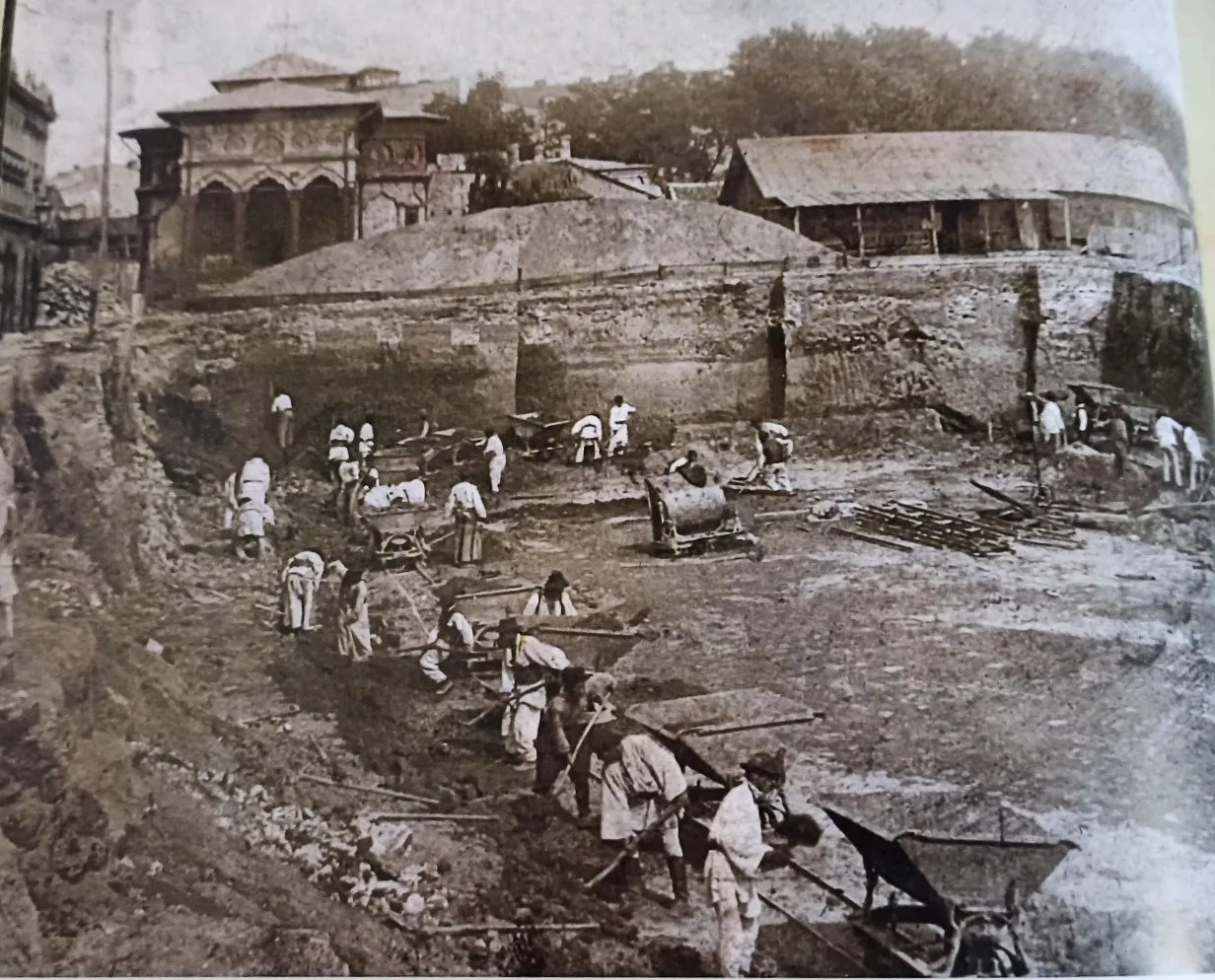
In this way they worked on the foundation of this palace. I think you are impressed by the "equipment"! ... and yet, they have often built faster than some buildings now, not to mention infinitely more beautiful. In the background the Stavropoleus Monastery, as it was in 1894 and then, below, as it is now.

On the right side of the photo, you can see a corner of the "Post Office Palace" building. In 1900, at the end of the nineteenth century, the building was ready. Probably the most imposing on Calea Victoriei, after the Royal Palace.
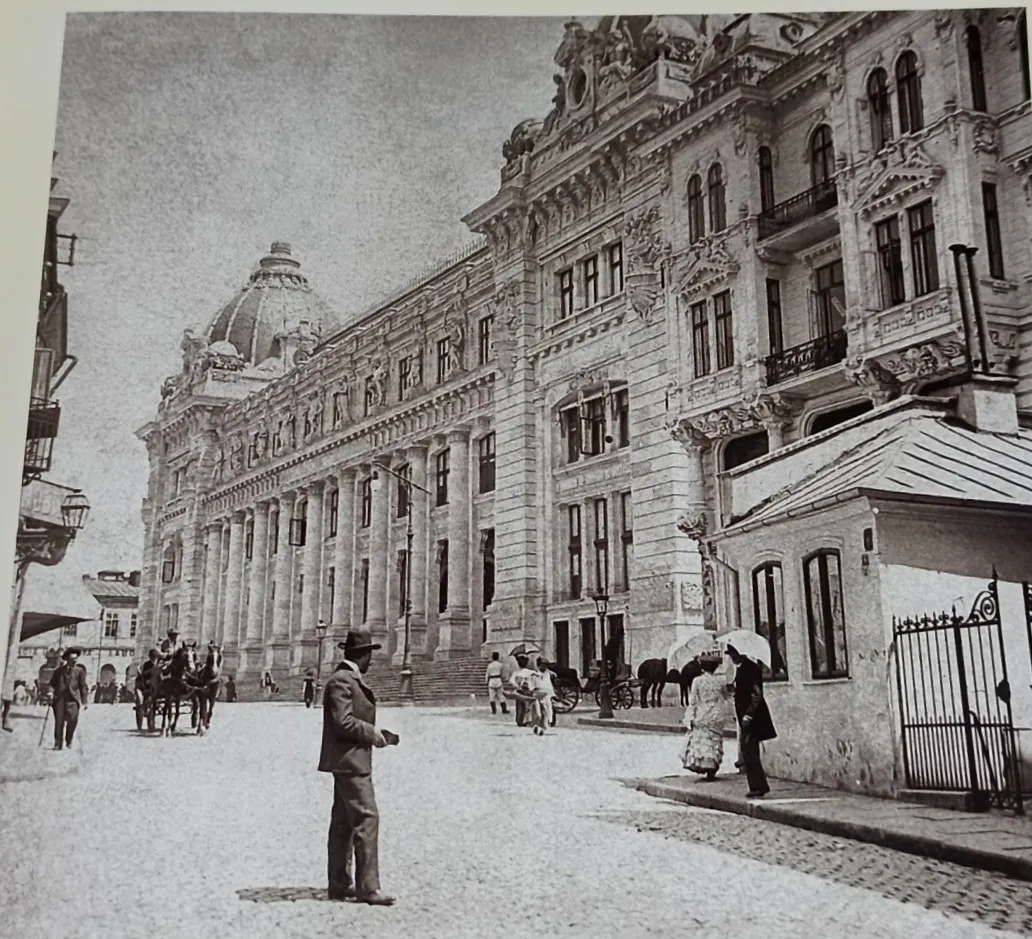
I have always had a prejudice, that life in the past was very hard and that I would not have liked to live hundreds of years ago. Now I came to believe that maybe it was a pleasant way of life, where only the technology and gadgets of modern life were missing, instead, there were other advantages.
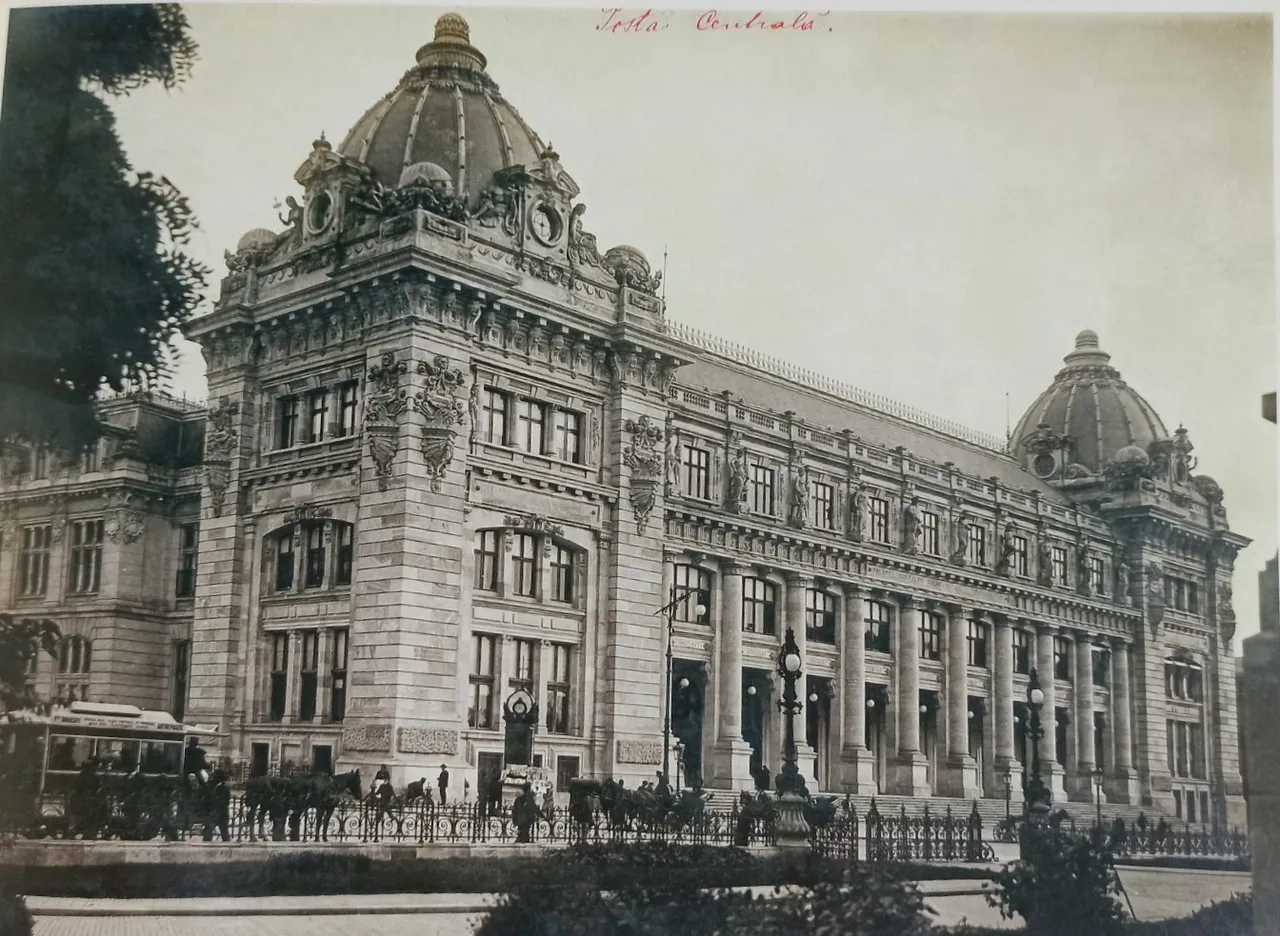
However, the aspects of modernizing life were obvious in 1900. People on Calea Victoriei dressed in Parisian fashion, a newsstand with a clock, a shoe polish on the corner of the building. Moreover, the horse-drawn tram had appeared! Of course, you will say that the first cars had already appeared in the west, but here, on the outskirts of Europe, I have always been decades behind.

Let's see what this building looks like now, as I found out, designed by a Romanian architect and with mixed architectural styles, as far as I can understand.
At the end of this small street that leads to Calea Victoriei, you can see the former Post Office Palace, now the History Museum. On the right is the CEC Palace and on the right another building that also belongs to the CEC (a bank).
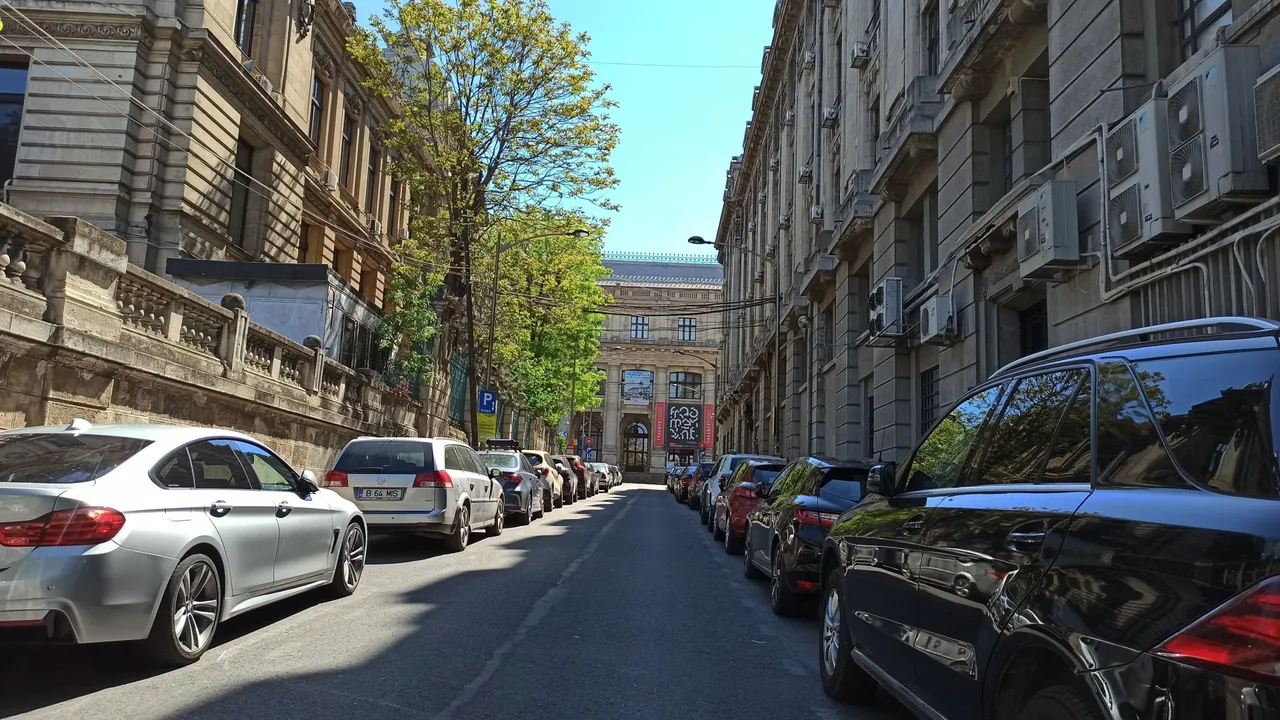
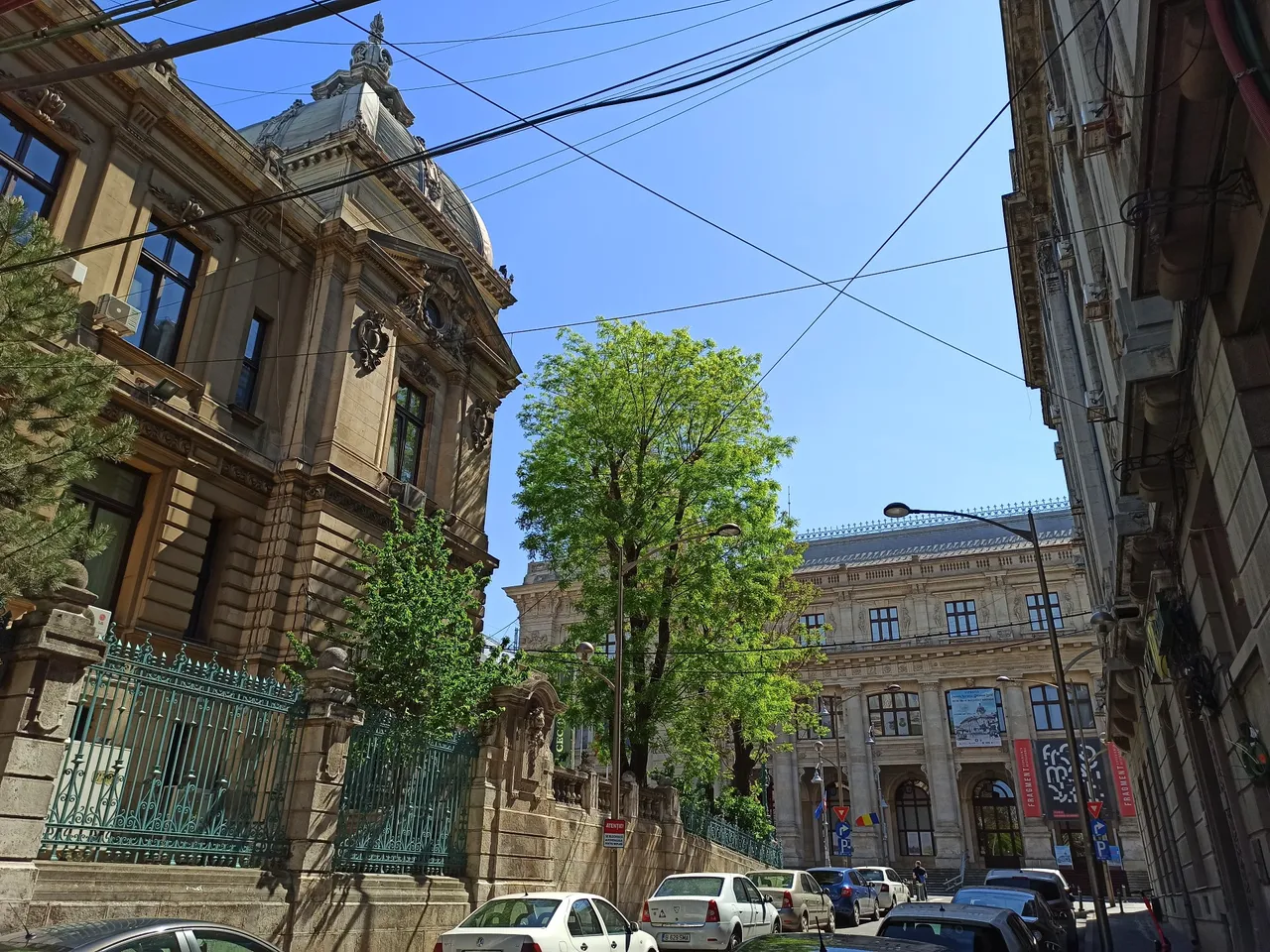
Because the building is so big and the boulevard is not wide enough, I can't take a picture of the whole building. I have to look for the angles that allow me to present as much as possible.
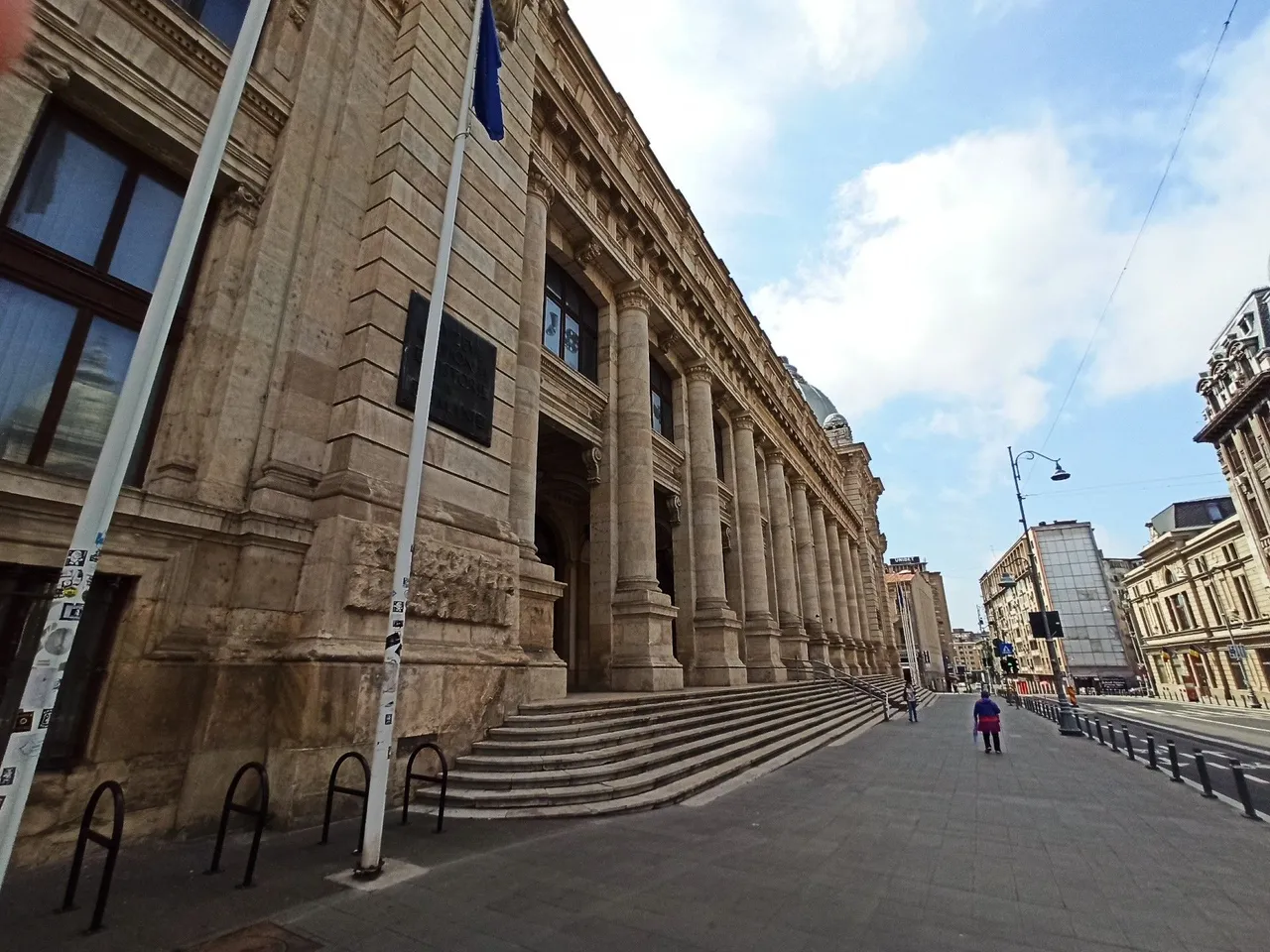
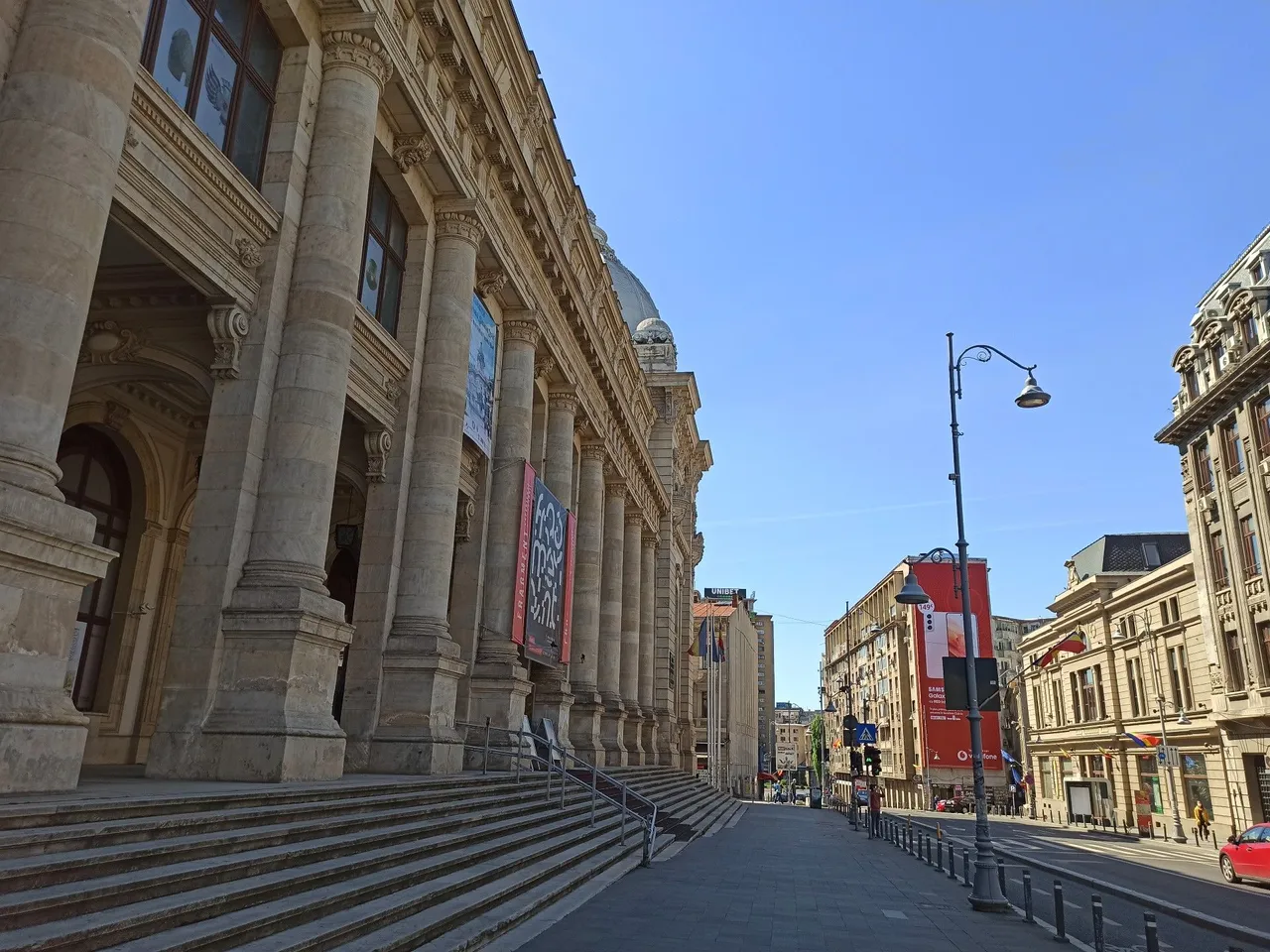
The imposing columns that I talked about earlier and that give prestige and majesty to the building.

This building was built in the early nineteenth century in four years. In the twentieth century, its restoration began and lasted more than ten years. This is to prove that technology does not help much when there is no desire, seriousness, and enthusiasm!
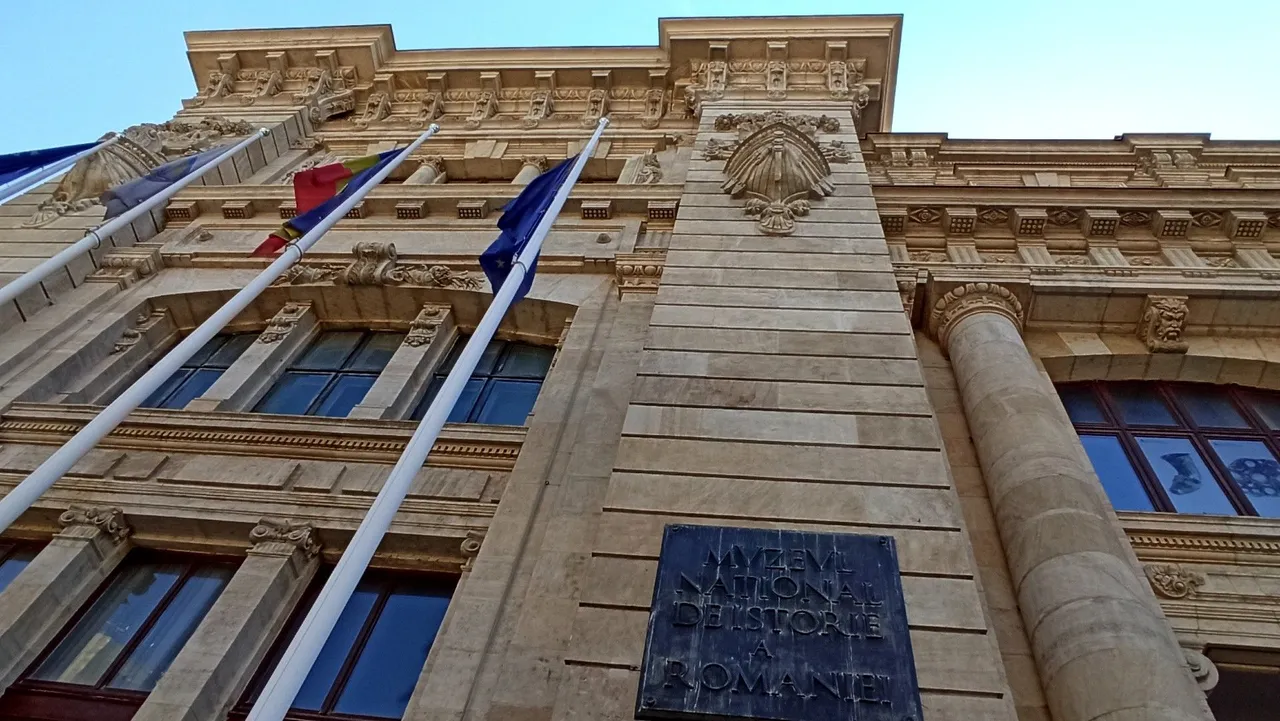
This building now houses the History Museum. An important museum, with very valuable exhibits, with vestiges from the Paleolithic, from antiquity, with treasures discovered in our country, and with a copy of Trajan's Column from Rome. On this column are represented, by bas-reliefs, the battles between the Romans and the Dacians (the ancestors of the Romanians). In fact, the conquest of Dacia by the Romans and as a consequence, the formation of the Romanian people, a Latin people, the only one of its kind in Eastern Europe, where most nations are Slavic.
My intention was to present here the CEC Palace, perhaps the most beautiful building on Calea Victoriei, of French influence and a good representative of Belle Epoque. but I think it would be too much and I will make another post for this beautiful building.


